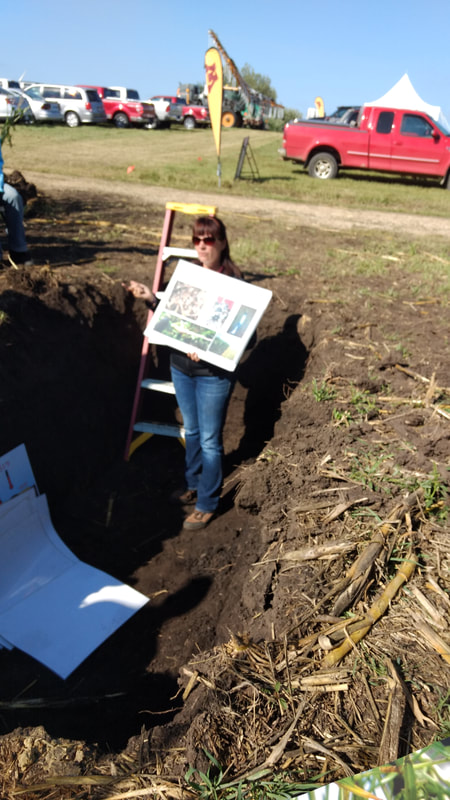 On September 8, LWV UMRR Vice-president Lonni McCauley attended the Cover Crop and Soil Health Learning Tour put on by the University of Minnesota in Rushmore in southwestern Minnesota. The tour included water infiltration demonstrations, hands-on activities, cover crop by herbicide demonstrations, research updates, a farmer panel, soil-root pit, and equipment demonstrations. Speakers at the session included: Shannon Osborne, USDA-ARS; Jennifer Hahn, Pheasants Forever; Brian Christianson, USDA-NRCS; John Shea, Nobles Co. SWCD; and Scotty Wells, Gregg Johnson, Jodi DeJong-Hughes, Liz Stahl, Randy Pepin, and Dan Raskin, U of MN Extension. The farmer panel was made up of Bruce Brunk, Bryan Bielger, and Mike Erbes. Lonni learned that cover crop adoption in Minnesota is not widespread – only 2% of farm land in Minnesota is in cover crops at this time. The University researchers are promoting strip-tilling, which is a hybrid tillage technique between no-till and clear-till. It leaves a 5-inch plowed furrow next to a 7-inch wide cover crop. This technique serves to have ease of planting in the plowed strip and also the advantage of a cover crop to stop soil erosion and water/nutrient loss. A three-farmer panel discussed their experiences and successes with cover crops. All three farmer panelists indicated they began farming with their dads. They indicated it was hard to persuade their dads to change to cover crops and less than clear-till farming. Only their increased yields on test plots convinced them. The average age of farmers in Minnesota is 57. They are reluctant to change lifelong farming habits.  The demonstration plots show that cover crops can lead to significant improvement in water retention and soil health. The host farmer said his fields now drain almost no water into the culvert in the ditch adjacent to his fields. In this picture, you see Jodi DeJong-Hughes, University of Minnesota Extension, demonstrate four-foot topsoil and the health of the soil after only three years of cover crop/low till practice. Lonni also reported that alfalfa pellets are being introduced by the U of M as fish food. They take the place of fish-based pellets which are depleting fish populations in the oceans. This will be a boon to the inland fish pond factories springing up in the country and another market for alfalfa. Alfalfa is a perennial crop that requires less inputs and retains soils and water on the farm field. This program is supported in part from a Conservation Innovation Grant from the USDA-Natural Resource Conservation Service and funding from MN North Central Region-Sustainable Agriculture Research and Education. You can read more about this program here. Thanks to Lonni for attending this session and assisting with this blog post!
0 Comments
Leave a Reply. |
| LWV Upper Mississippi River Region | UMRR blog |
 RSS Feed
RSS Feed